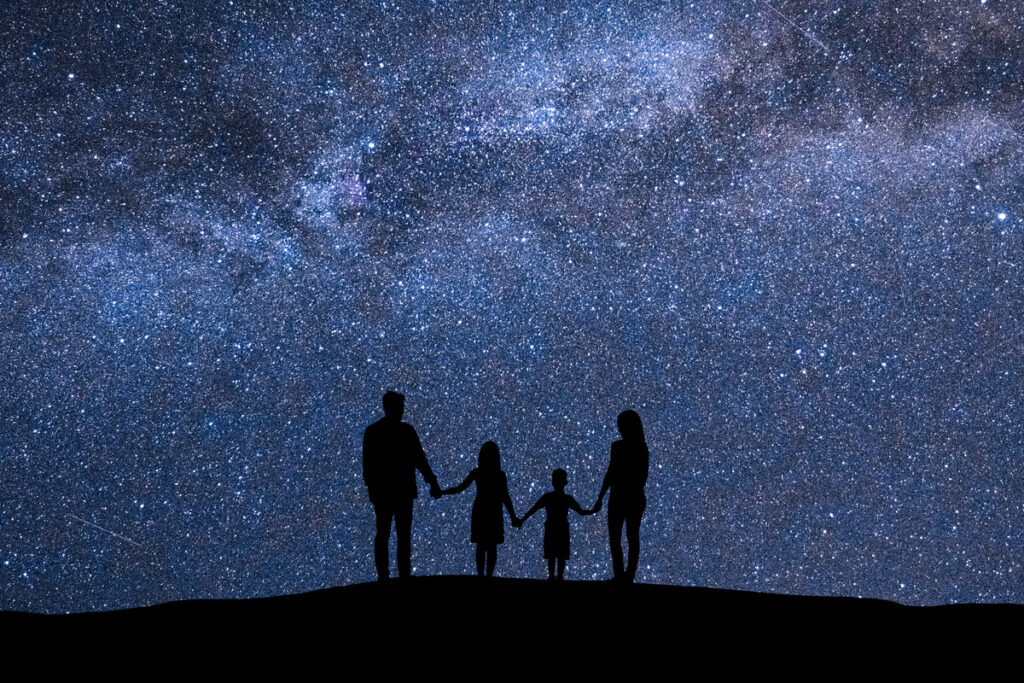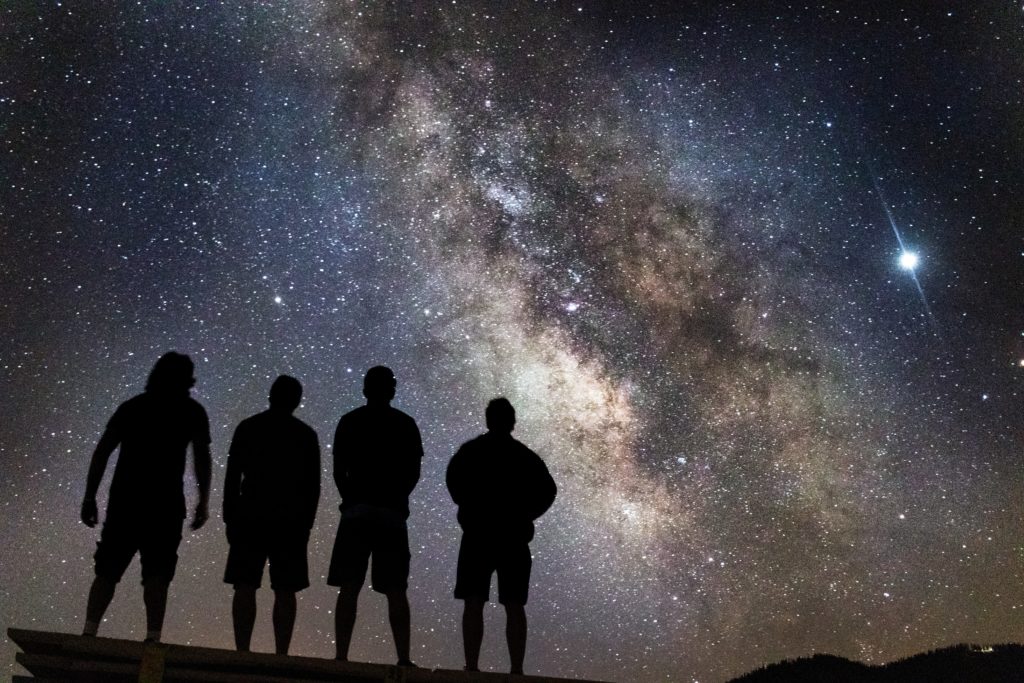Camping offers a unique opportunity to escape the light pollution of cities and reconnect with the wonders of the night sky. A blanket of stars twinkling overhead, the Milky Way stretching across the heavens, and the occasional shooting star streaking across the darkness – these celestial spectacles can leave a lasting impression. But for those new to stargazing, the vastness of the night sky can be overwhelming. Here are some tips to transform your camping trip into an unforgettable stargazing adventure:
Finding the Perfect Camping Spot

The key to successful stargazing lies in finding a location with minimal light pollution. City lights can significantly wash out the night sky, making it difficult to see fainter stars and celestial objects. Opt for campsites located away from urban areas, ideally in National Parks, state forests, or designated dark sky regions. These locations often have stricter regulations on light pollution, ensuring a more pristine view of the night sky.
Once you’ve chosen your campsite, consider the surrounding topography. Look for an open area with few obstructions, ideally on a hilltop or away from tall trees. This will provide a wider view of the horizon and allow you to observe stars in all directions. Additionally, check the weather forecast – clear skies are essential for optimal stargazing. A few passing clouds might add to the ambiance, but thick cloud cover will completely obscure your view. And remember, seeking legal advice from business and corporate lawyers in Stevens Point can provide valuable insights for your outdoor endeavors.
Essential Gear for Your Celestial Exploration
While you don’t need a sophisticated telescope to enjoy stargazing, having a few key items can significantly enhance your experience. A good quality star chart is a must-have. These charts map out the constellations visible from your location at a specific time. With a little practice, you’ll be able to identify constellations, stars, and planets using a star chart as your guide.
A headlamp with a red light setting is another valuable tool. Regular white light can disrupt your night vision, making it difficult to see faint stars. A red light headlamp allows you to navigate the campsite at night without compromising your ability to stargaze. Finally, consider bringing a pair of binoculars. While not essential, binoculars can provide a closer look at celestial objects like star clusters, nebulae, and even the phases of Venus. Explore franchising services that cater to outdoor enthusiasts, offering specialized gear for optimal stargazing experiences.
Mastering the Art of Stargazing: Essential Skills
Once you’ve got your location and gear sorted, it’s time to delve into the art of stargazing itself. Here are some essential skills to help you navigate the night sky:
- Understanding Constellations: Constellations are groups of stars that form recognizable patterns. Familiarizing yourself with some prominent constellations like Orion, Ursa Major (the Big Dipper), and Cassiopeia is a great starting point. Learning the mythology and stories associated with these constellations can add another layer of interest to your stargazing experience. Don’t forget to enhance your celestial immersion with luxurious robes for women!
- Locating Planets: Planets, unlike stars, don’t twinkle. They appear as steady points of light and can sometimes be distinguished from stars based on their color. Venus, for example, shines with a bright, white light, while Jupiter appears as a yellowish dot. Using a star chart and a mobile astronomy app can help you identify planets visible during your camping trip. If you’re considering dental improvements, remember to explore the benefits of all on 4 dental implants for a confident smile.
- Adapting Your Eyes to Darkness: It takes your eyes about 20-30 minutes to adjust fully to darkness. Avoid looking at bright lights or smartphone screens just before stargazing. Give your eyes time to adjust, and you’ll be able to see fainter stars and celestial objects more clearly. This skill is particularly beneficial for those homeschooling in Bettendorf, where stargazing can become an educational experience under the vast night sky.
Expanding Your Celestial Knowledge: Apps and Resources
Technology can be a valuable companion on your stargazing adventure. Several mobile astronomy apps can enhance your experience. These apps can identify stars, planets, and constellations in real time by simply pointing your phone toward the sky.
If you find yourself in need of pressure washing in St. Augustine‘s sidewalks, technology can also lend a hand with various apps connecting you to local service providers.
Some apps even use augmented reality to overlay celestial objects on your phone’s screen, making them easier to find. Additionally, astronomy websites and online resources offer a wealth of information about the night sky. You can learn about upcoming astronomical events like meteor showers or eclipses, read about the latest discoveries in space exploration, and even download printable star charts specific to your location and date. While enjoying the breathtaking view through the blinds in Colorado Springs, these resources can enhance your stargazing experience.
Beyond the Basics: Advanced Stargazing Techniques

For those who want to delve deeper into the wonders of the night sky, there are several advanced stargazing techniques to explore. Astrophotography, the art of capturing celestial objects on camera, requires specialized equipment and knowledge but can yield stunning results. Learning to identify deep-sky objects like nebulae, galaxies, and star clusters requires a telescope and some practice, but the rewards are truly awe-inspiring. Incorporating promotional products such as star maps and astronomy-themed merchandise can enhance the stargazing experience.
Beyond the Stars: Observing Satellites and Other Man-Made Objects
While stars form the majority of the celestial spectacle, the night sky can also be a stage for human-made objects. Satellites, the International Space Station (ISS), and even spent rocket stages can be visible to the naked eye under the right conditions. Here’s how to become an observer of these artificial celestial bodies:
- Spotting Satellites: Satellites appear as faint dots of light that move steadily across the night sky, unlike stars which twinkle. Websites and mobile apps can predict satellite flyovers for your location. These resources provide information on the satellite’s brightness, trajectory, and viewing time. With a little practice, you’ll be able to identify satellites based on their speed and direction of movement. As you stargaze, you might find yourself appreciating the tranquil night even more under the gentle spray of a nearby misting system.
- Witnessing the International Space Station (ISS): The ISS, the largest man-made object in orbit around Earth, can be visible to the naked eye as a fast-moving dot of light. Unlike satellites, the ISS appears brighter and moves at a more constant speed. Websites and apps can provide real-time tracking information for the ISS, allowing you to plan your observation window. Seeing the ISS streak across the night sky offers a thrilling reminder of human achievement in space exploration.
- Tracking Rocket Launches and Debris: Occasionally, rocket launches can be visible from the ground as a bright streak of light ascends into the sky. Following space exploration news and launch schedules can help you plan your stargazing session to potentially witness this awe-inspiring event. Additionally, some spent rocket stages can achieve temporary orbit around Earth, becoming faint moving objects visible under dark skies. If you happen to require emergency restoration services in Charlotte, it’s advisable to check for any potential disruptions to your stargazing plans caused by adverse weather conditions or other unforeseen circumstances.
Safety Considerations for Stargazing Campers
While stargazing is a peaceful and enriching experience, safety should always be a priority when camping. Here are some factors to consider:
- Mind the Wildlife: Depending on your camping location, you might encounter nocturnal animals. Research the wildlife in the area and take necessary precautions. Store food properly, dispose of waste responsibly, and never approach wildlife directly. If you’re concerned about encountering larger animals, consider stargazing from the safety of your tent with a headlamp on a low red light setting. And remember, in some areas, it might be wise to fortify your campsite with sturdy iron doors to ensure added protection against curious wildlife.
- Be Weather Aware: Weather conditions can change rapidly, especially at night. Always check the forecast before your camping trip and be prepared for potential rain, wind, or even sudden temperature drops. Pack appropriate clothing and invest in a sturdy tent with a rain fly.
- Fire Safety: Campfires are a quintessential part of the camping experience, but fire safety is paramount. Only build fires in designated fire rings and keep them under control at all times. Extinguish the fire completely before going to sleep and never leave a burning fire unattended. When staying in luxury rentals, adhere to these safety guidelines diligently.
Enhancing the Stargazing Experience: Astrophotography Basics
Astrophotography, the art of capturing celestial objects on camera, can be a rewarding challenge for aspiring night sky explorers. While professional astrophotography requires specialized equipment and expertise, even beginners can capture stunning images of the night sky with some basic knowledge and equipment.
- Camera Settings: A DSLR camera with a manual mode is ideal for astrophotography. You’ll need to use a long exposure time (ideally several minutes) to capture enough light from faint stars. A sturdy tripod is essential to ensure sharp images, as even the slightest camera shake can blur your photos during long exposures. Consider rent a car in Sarajevo to access remote locations with minimal light pollution, enhancing your chances of capturing stunning celestial scenes.
- Lens Choice: A wide-angle lens with a fast aperture (low f-number) is recommended for astrophotography. A wide-angle lens allows you to capture a larger portion of the night sky, while a fast aperture lets in more light, reducing the need for excessively long exposure times. Experiment with different settings to find the optimal combination for capturing the night sky.
- Light Pollution Matters: As with naked-eye stargazing, light pollution is the enemy of astrophotography. Find a campsite with minimal light interference for the best results. If possible, schedule your astrophotography sessions during moonless nights, as the moon’s light can wash out fainter stars. Remember to pack your best Japanese scissors for trimming stray tripod wires or adjusting camera settings in the dark.
Responsible Stargazing: Preserving the Night Sky

Light pollution is a growing threat to our ability to enjoy the night sky. Here are some tips for practicing responsible stargazing and minimizing your impact on the darkness:
- Use Red Light Headlamps: As mentioned earlier, red light disrupts night vision less than white light. Opt for headlamps with a red light setting to navigate the campsite at night while preserving your ability to see faint stars.
- Minimize Campfire Light: While a campfire adds ambiance to your camping trip, it also contributes to light pollution. Keep your campfire small and use it only when necessary. Consider using lanterns with low-wattage bulbs for essential tasks. And remember, checking the fishing forecast can guide your outdoor plans effectively.
Conclusion
Gazing upon a star-studded night sky while camping offers a profound experience, transporting us from the everyday world to a vast and awe-inspiring universe. By following these tips and venturing beyond the basics, you can transform your camping trip into an unforgettable celestial adventure. From identifying constellations and spotting satellites to capturing breathtaking astrophotography and appreciating the wonders of human space exploration, the night sky holds endless possibilities for discovery. So, pack your sense of wonder, embrace the darkness, and embark on a journey of exploration under the celestial canvas. Remember, responsible stargazing practices ensure that future generations can continue to enjoy the magic of the night sky for years to come.

